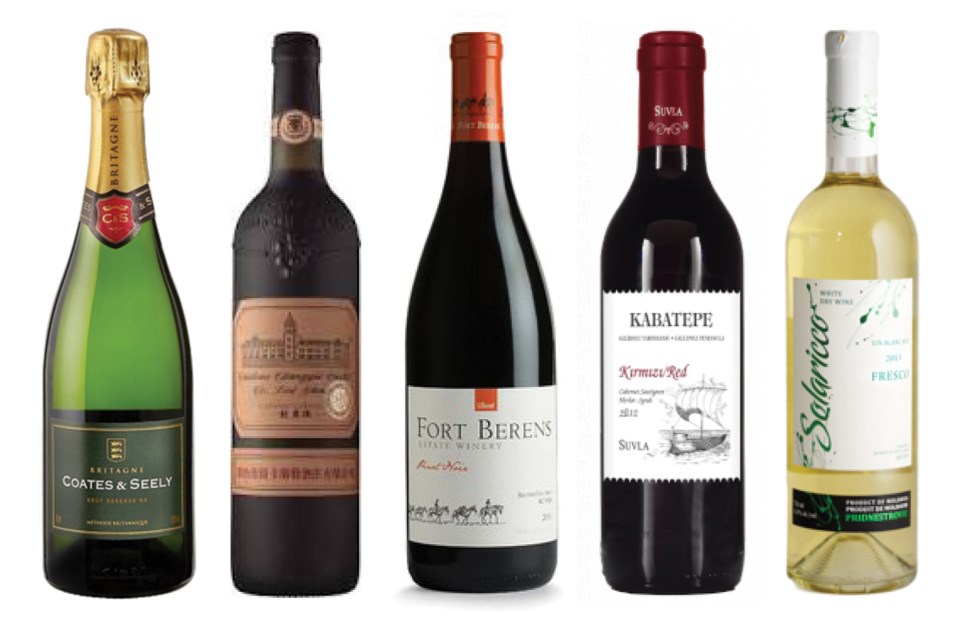Beyond my predictions of last week, I harbour a hope that in the year ahead your thirsty curiosity will lead you to explore all the interesting nooks and crannies where wine is made.
First stop, England. What, this grey and drizzly country makes wine? Yup. Though skeptics may have snickered behind their backs, the stiff-upper-lip Brits stuck to their guns. Having identified the soil in South East England as having the same unique chalk found in the Champagne region, they focused on high quality sparkling wine fashioned after their famous French neighbours. The recent warming effect of climate change has helped tremendously. Now we can enjoy Brit bubble in BC. The Coates & Seely Hampshire Reserve Brut ($70-75) is available at selected private wine stores. Lean and rapier-like, it charms with orchard apples and delicate floral notes.
China is another country that likely doesn’t leap to mind however it’s among the top ten largest producers in the world. The industry is young but those invested are taking it very seriously. The Chinese have a well-documented fascination with the wines of Bordeaux so it may come as no surprise that Cabernet Sauvignon is China’s most planted grape. The next step is to identify what grapes will actually do best and where. Check in on China’s progress with the 2005 Chateau Changyu Castel Cabernet Gernischt ($19.99) at BC Liquor Stores. Cabernet Gernischt is one and the same as Chile’s Carmenère grape, originally another Bordeaux variety.
You might think it’s pretty normal that we make wine in BC. We’ve practically been raised on the stuff. But when you’re guzzling back your Okanagan Pinot Gris remember that people in other parts of the world are shocked to learn that Canada produces wine. What may surprise you is where BC winemakers are venturing, like Shuswap, the Kootenays and Lillooet. The latter is a couple of hours drive northeast of Whistler and BC’s newest wine region. Established in 2011, Fort Berens crafts a handful of wines from estate fruit grown in the beautiful Fraser Canyon. My favourite of the line-up is the bright and pretty 2013 Fort Berens Pinot Noir ($26-28 at BC VQA stores).
Venturing off the beaten track doesn’t mean just seeking out the newest wine regions. Many countries have a long history of viticulture, yet political or religious circumstances may have curbed quality, production or export. Very little of Turkey’s wine makes it outside its borders. The first wine I’ve tried is the 2013 Suvla Kabatepe Red from Gallipoli Peninsula ($28-30 at selected private wine stores). Here international superstars Cabernet Sauvignon and Syrah are blend with Karasakiz, a rare native grape to Turkey. Now I only hope that soon we’ll be able to taste wines featuring more of Turkey’s reportedly fabulous indigenous varieties.
And when is the last time you had a wine from Moldova? Despite making wine for millennia, Moldova’s recent history did little to encourage quality. When Russia (Moldova’s biggest export market) placed a ban on wine from Moldova in 2006, it turned out to be just the incentive Moldova needed to improve. The 2013 KVINT Solaricco Fresco ($12.99 at BC Liquor Stores) is made from Pink Traminer (a close relative of Gewurztraminer), Aligoté (a less-common grape in Burgundy) and Moldova’s very own Viorica variety. Aromatic with jasmine tea, apple blossom, pink grape fruit peel and candied rose petals yet dry and juicy, it packs personality for the price.
I encourage you to bust out of your comfort zone and crack into at least one of these. Chalk it up to the purposes of science if nothing else. You may be pleasantly surprised.



